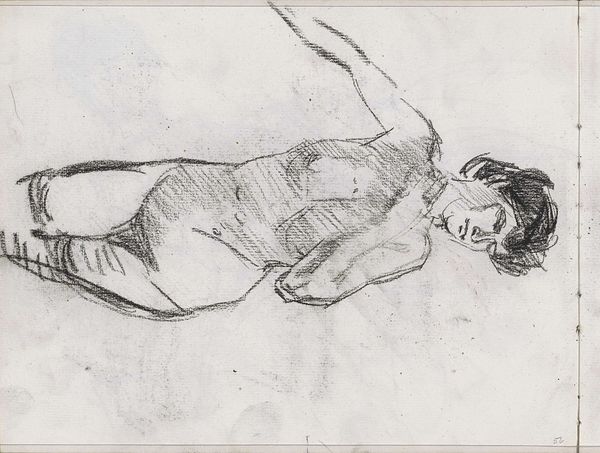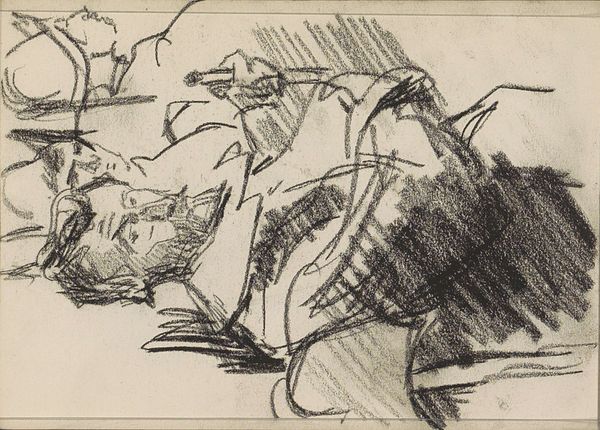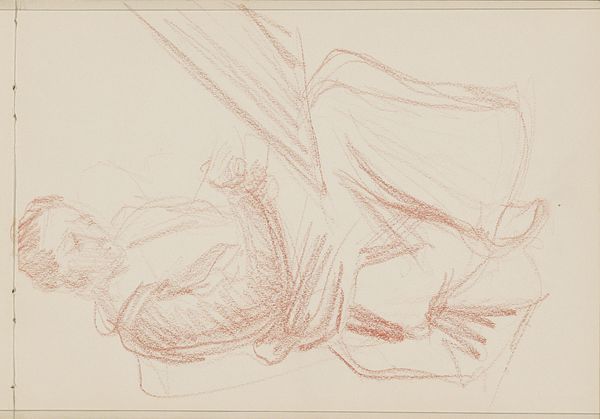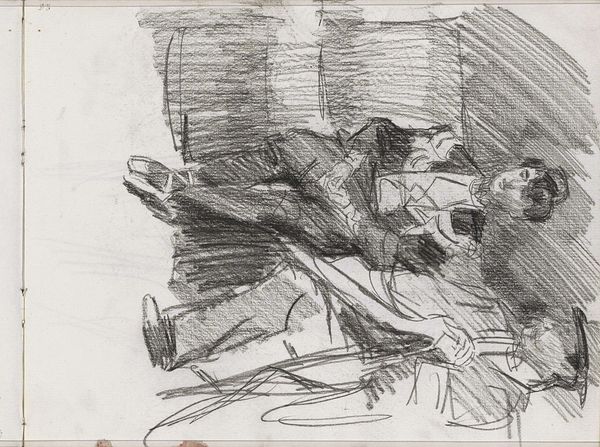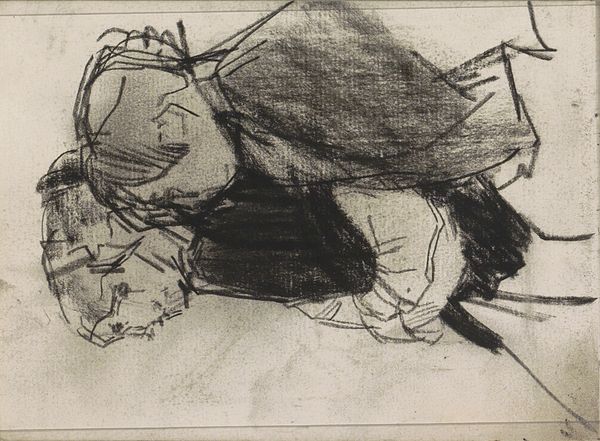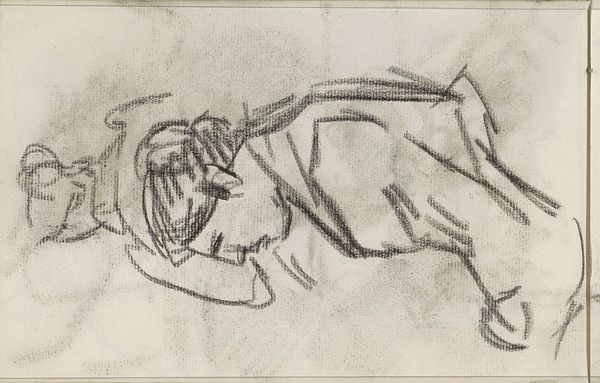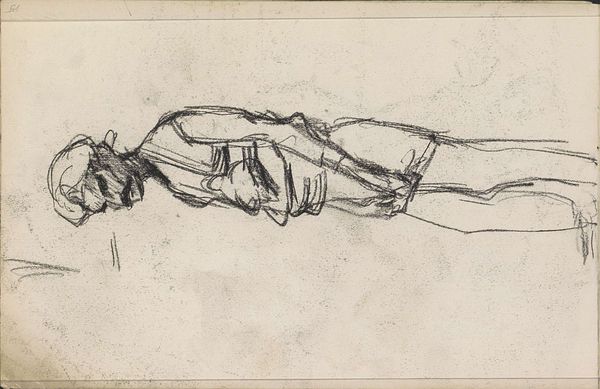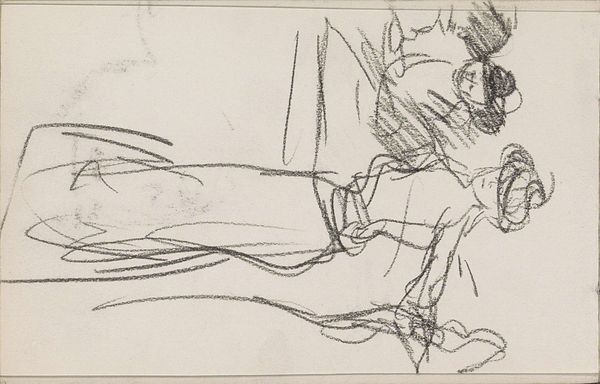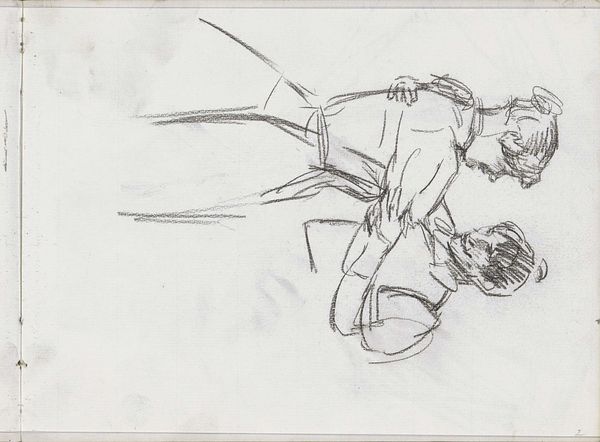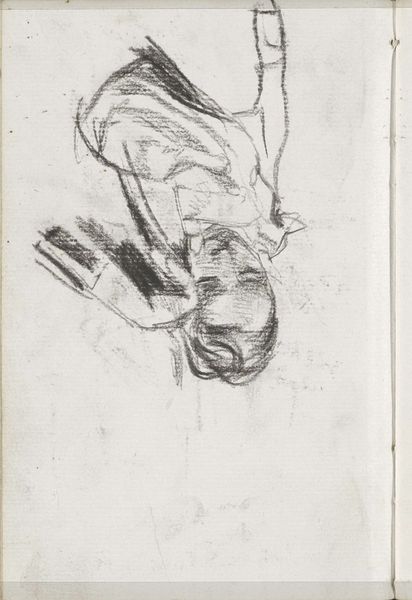
Copyright: Rijks Museum: Open Domain
Editor: Here we have "Two Dancing Women," a pencil drawing by Isaac Israels, created sometime between 1875 and 1934. It's loose, quick—a fleeting moment captured on paper. It feels unfinished, yet so full of movement. What do you see in this piece? Curator: The immediate striking feature is, as you observed, the dynamism achieved through economical means. Consider the application of line. It is not descriptive in a conventional sense, but rather generative, building form through the density and directionality of the strokes. Note, particularly, the dress of the woman at the left. Editor: The way the pencil lines suggest folds and fabric, even without shading, is quite effective, isn't it? Is it about capturing form or the sensation of movement? Curator: Precisely. Israels prioritizes the latter. Observe the incomplete nature of the faces. Details are eschewed in favor of capturing the tilt of the head, the implied energy. Semiotically, these absent details suggest universality. They become not specific women, but Woman in motion. How do you feel about the work? Editor: I initially felt that the rapid strokes and lack of precise detail made it feel casual, like a page torn from a sketchbook. However, it seems intentional in that simplicity to emphasize gesture over precision. Is it valid to feel conflicted by it? Curator: Indeed. That tension is the very core of its aesthetic appeal. The artwork foregrounds the process of seeing itself; its incompleteness compels the viewer to participate, to complete the image in their mind's eye, enacting a structural relationship between the artist and observer. We must then question our original assessment of this art work, based on its clear aesthetic design, as we leave. Editor: That’s fascinating. I see now it demands more engagement than initially apparent! Thank you!
Comments
No comments
Be the first to comment and join the conversation on the ultimate creative platform.
